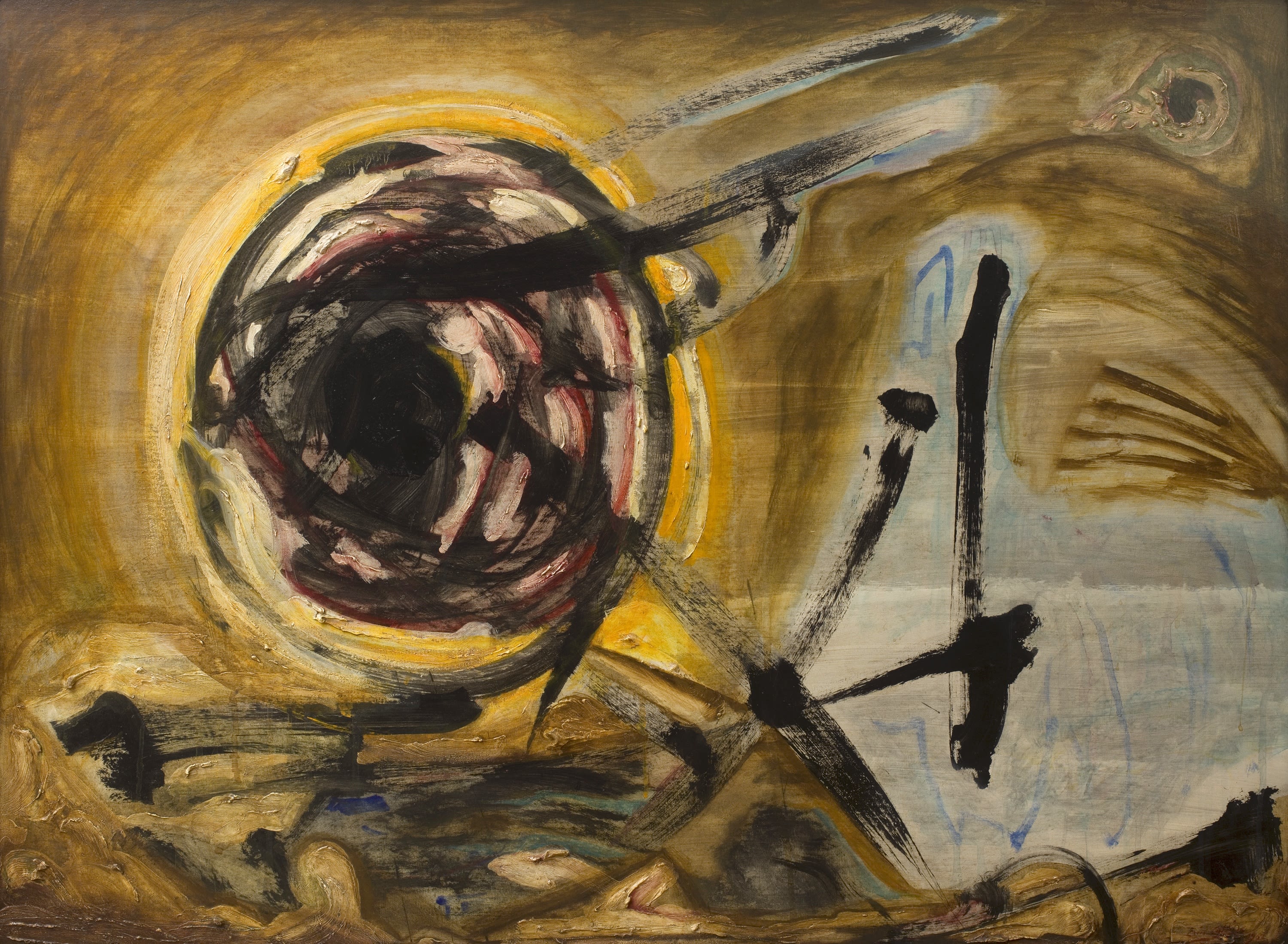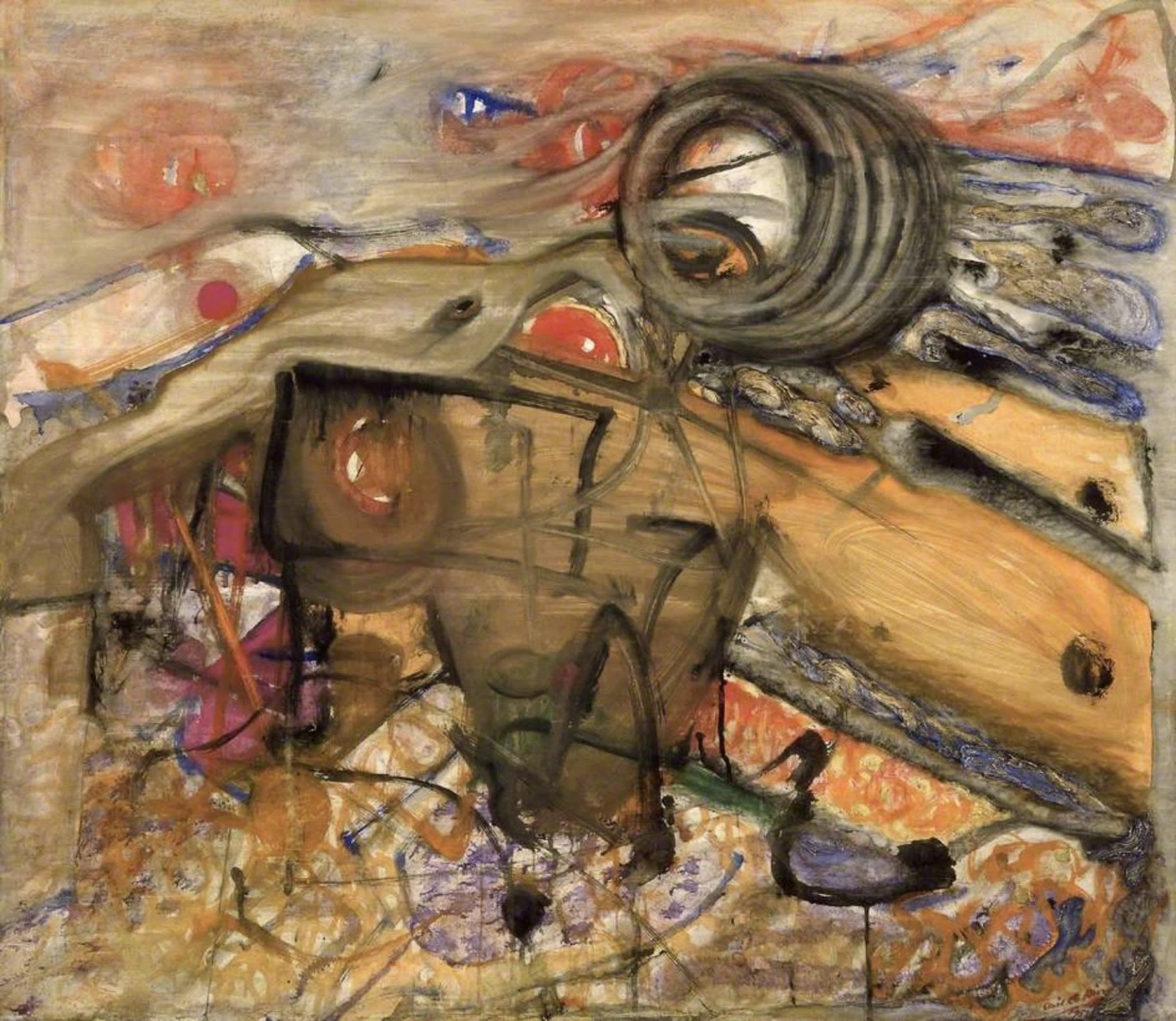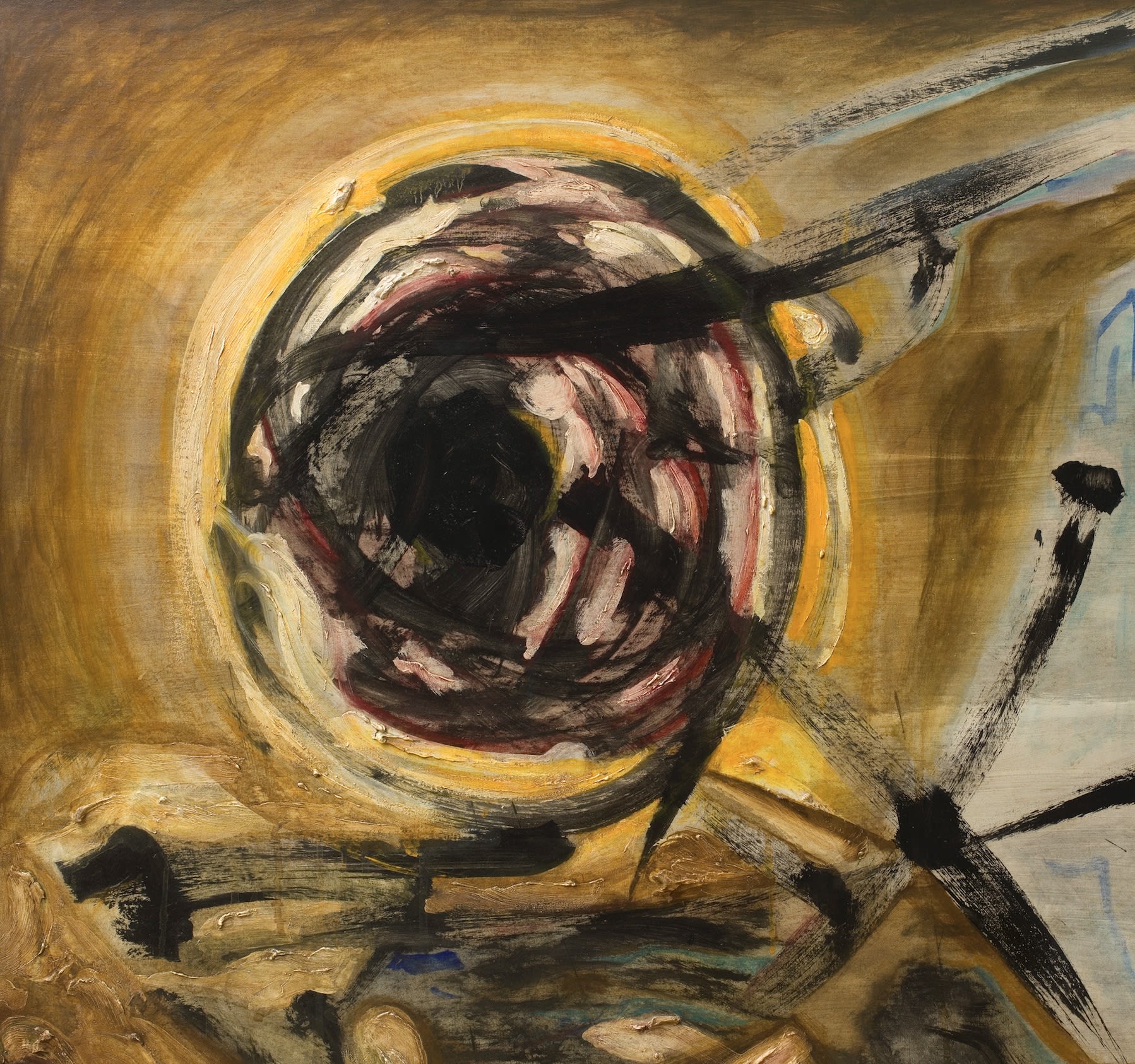From his formative years, Cecil Collins sought to reveal a hidden world which lies beyond the visible. As a student at the Royal College of Art in the 1920s, he had been interested in Paul Klee whose improvisatory style and cosmic mode of abstraction must have intrigued the young artist.

Aside from Klee, Collins (1909-1989) drew upon a wide range of sources, including surrealism, Eastern philosophy, and the English Romantics Samuel Palmer and William Blake. It was a heady combination, demonstrating his mission to develop an independent approach to art. By the 1940s, he had formulated a unique, coherent approach, which found expression in his polemical essay The Vision of the Fool, first published in 1947.
Paintings and drawings cannot be explained. Like life, they are unexplainable. All art brings a message into the world […]. It is the message of life, of life itself, and this message can only be received, and understood, through the form and nature of the medium in which it is created, and not by translating it into another medium, for the message is implicit in the nature of the medium.
Like many British artists of the period, his figurative style suggested an awareness of Picasso while the vivid imagery was of his own devising, most notably the recurring presence of ‘the Fool’, described by Collins as a persecuted symbol of poetry, art and religion in the machine age.

In the late 1950s, Collins resolved to make a change in his work. He discarded his previous manner of exacting outlines and figural representation, turning instead to a far more abstract style underpinned by improvisation. Executed in 1961, The Waters of the Sun is one of his ‘matricular’ paintings from the period. The series was based on pure imagination and was intended to provide a visual doorway into ‘the matrix’ – the conditions that are formative to life itself. Judith Collins (no relation) curated a retrospective exhibition of the artist’s work at the Tate Gallery in 1989 and explained the thinking behind these works.
[These matricular works] consisted of beginning with a loaded brush with a different colour in each hand, the eyes shut, and a gestural attack with the pigment on to the support. With the opening of the eyes, an image or idea emerged from the working of the paint. A fluid and creative collaboration between materials and manipulator ensued… The ‘matricular’ procedure was for Collins equivalent to the execution of a rite and it also performed for him a rite of passage.
Drawing upon the automatic technique of surrealism and the medium-driven quality of contemporary American abstract painting, Collins’s practice was yet something quite new and the resulting works have an original air of shamanic truth-telling.

While some works received conventional titles like ‘Lyric Landscape’, a work bequeathed to the Tate Collection by the artist's wife Elisabeth, a work like The Waters of the Sunevokes the poetic image of a cosmic landscape. Composed from the fantastic imagery of the artist’s imagination, the subject on the left-hand side of the picture is a vast celestial body, circled with black and gold paint and emitting broad sweeps of black paint – the eponymous ‘waters’ perhaps. In recent years, television audiences have become accustomed to this type of deep space panorama, with detailed and convincing computer-generated imagery helping to dramatise outer space. Programmes like The Planets, for example, broadcast by the BBC in 2019, rendered the history of the solar system in striking technicolour. While Collins’s painting is fundamentally poetic by comparison, the planet-like quality of its subject matter has a similarly dramatic visual effect and appeals to the same, fundamentally human fascination with the stars.

In 1970, The Waters of the Sun was bought from Collins by Stephen Keynes, a great-grandson of Charles Darwin and nephew of another art collector, John Maynard Keynes. After a visit by Keynes to see Collins in his Chelsea studio, the artist wrote to him on 14 March 1970.
I felt strongly when you were here looking at the paintings that you were very much on the beam of the inner creativity of my painting, and that your intuition was in the flow of it. It is also a joy for me to be able to communicate that experience.
He went on to ask Keynes ‘what distance your usual chair is from [the work].’ Following the purchase, Cecil and Elisabeth became friends with Keynes and his wife, visiting one another on a regular basis. The work remained with Keynes until his death in 2017. A large-scale work executed during a period of heightened artistic freedom, The Waters of the Sun uses an abstract visual language to open a portal, leading its audience out of the narrow material world into a hidden poetic landscape, full of light and colour.


